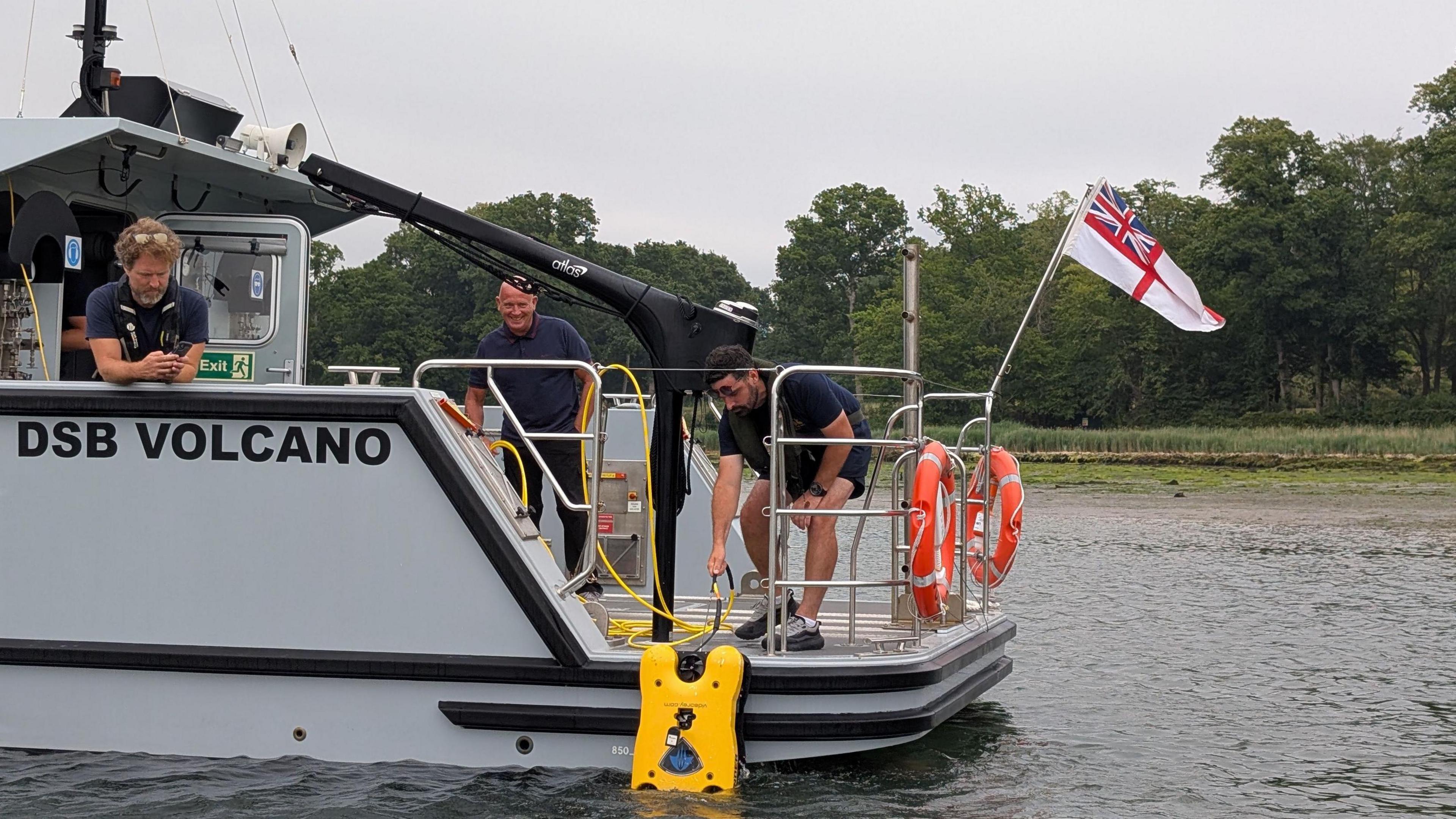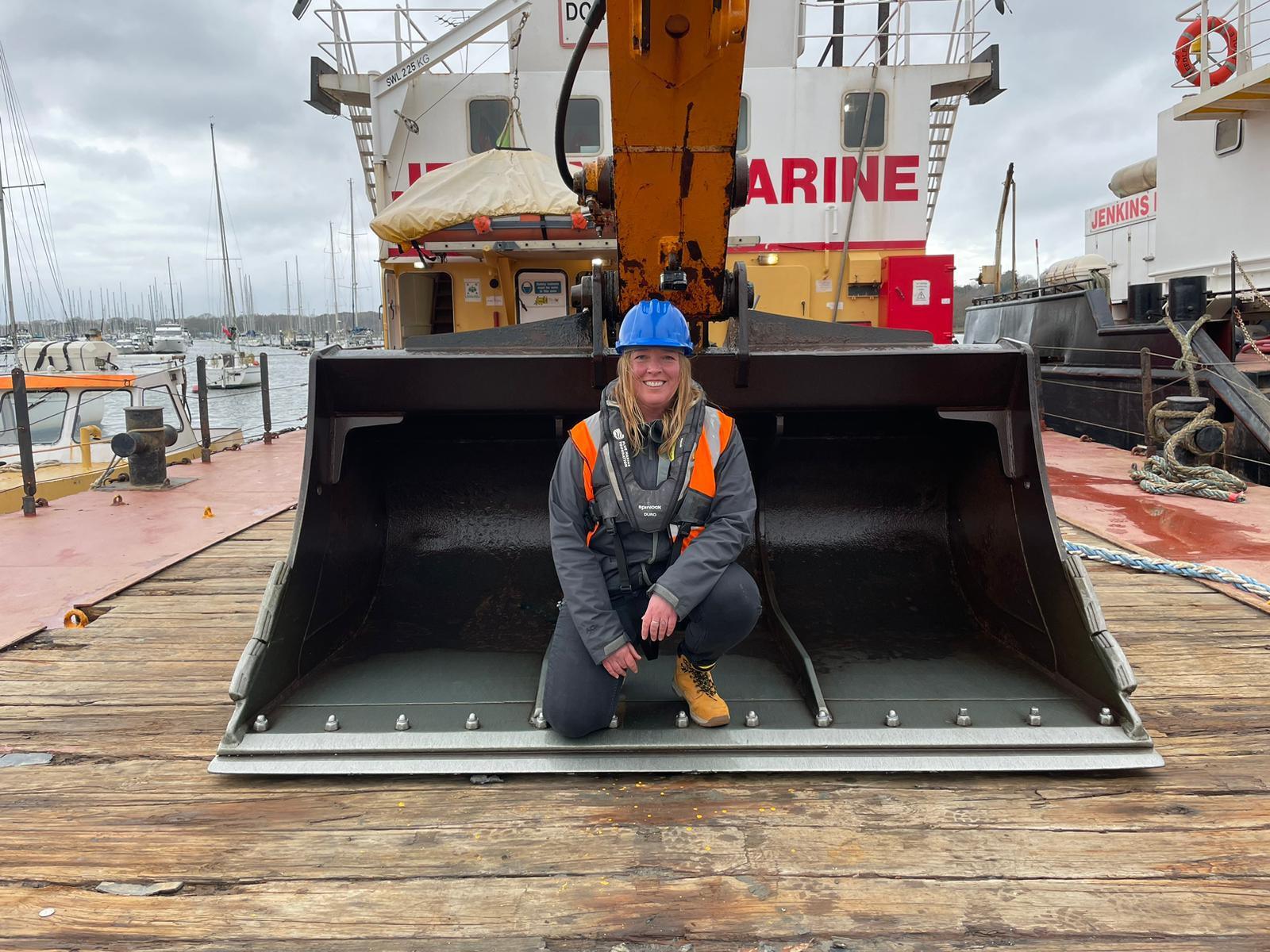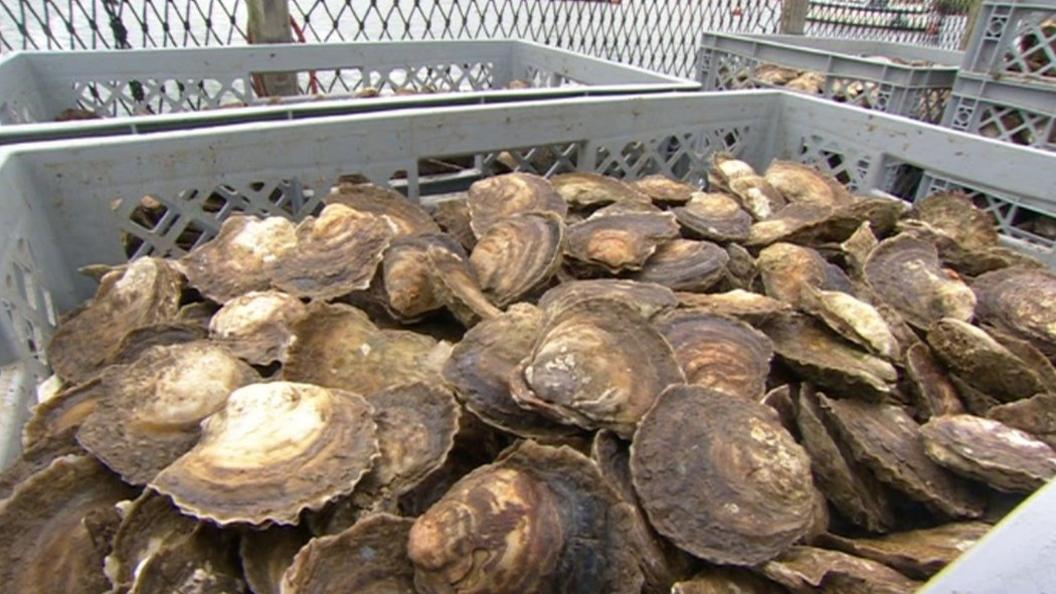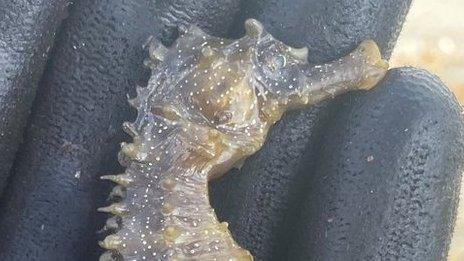Underwater camera finds oyster reef thriving

The remote operated vehicle was used to inspect the reef on the River Hamble two year on from its creation
- Published
Video footage of an oyster reef built on a river bed two years ago has revealed it is now full of life compared to the surrounding area.
The reef, in the River Hamble, home to about 30,000 oysters, was created by the Solent Seascape Project in 2023 as part of a scheme to bring back native oyster reefs to the Solent area.
The project, led by Blue Marine Foundation, teamed up with the Royal Navy to inspect the reef for the first time using a remote operated vehicle (ROV).
The underwater footage showed oysters on the reef, that covers an area about the size of a football pitch, had successfully settled and sponges, sea lettuce, crabs and fish were thriving on the gravel and shell reef.

The footage revealed the riverbed without the reef (left) and within the reef area (right) where marine life was found flourishing
The underwater camera recorded the reef zone, created by placing 468 tonnes of gravel and shell over a quarter on the riverbed, as well as the surrounding seabed.
Dr Luke Helmer, restoration science manager at Blue Marine, said: "It was amazing to get eyes on the reef for the first time in such detail.
"The contrast was striking - where reef-building materials and oysters had been placed, the underwater world was filled with life, appearing far richer than the nearby unrestored areas.
"It was great to see so many sponges, a big spider crab and quite a few fish species in a relatively short operation. It really highlights the importance of this habitat and why we need it back."
The Solent Seascape Project is hoping to reverse the loss of the oyster fishery industry in the Solent area lost over the past two decades due to pollution, invasive species, disease and over-extraction.
Get in touch
Do you have a story BBC Hampshire & Isle of Wight should cover?
Related topics
- Published5 April 2023

- Published26 April 2023

- Published18 April 2024
